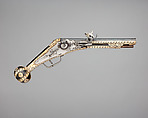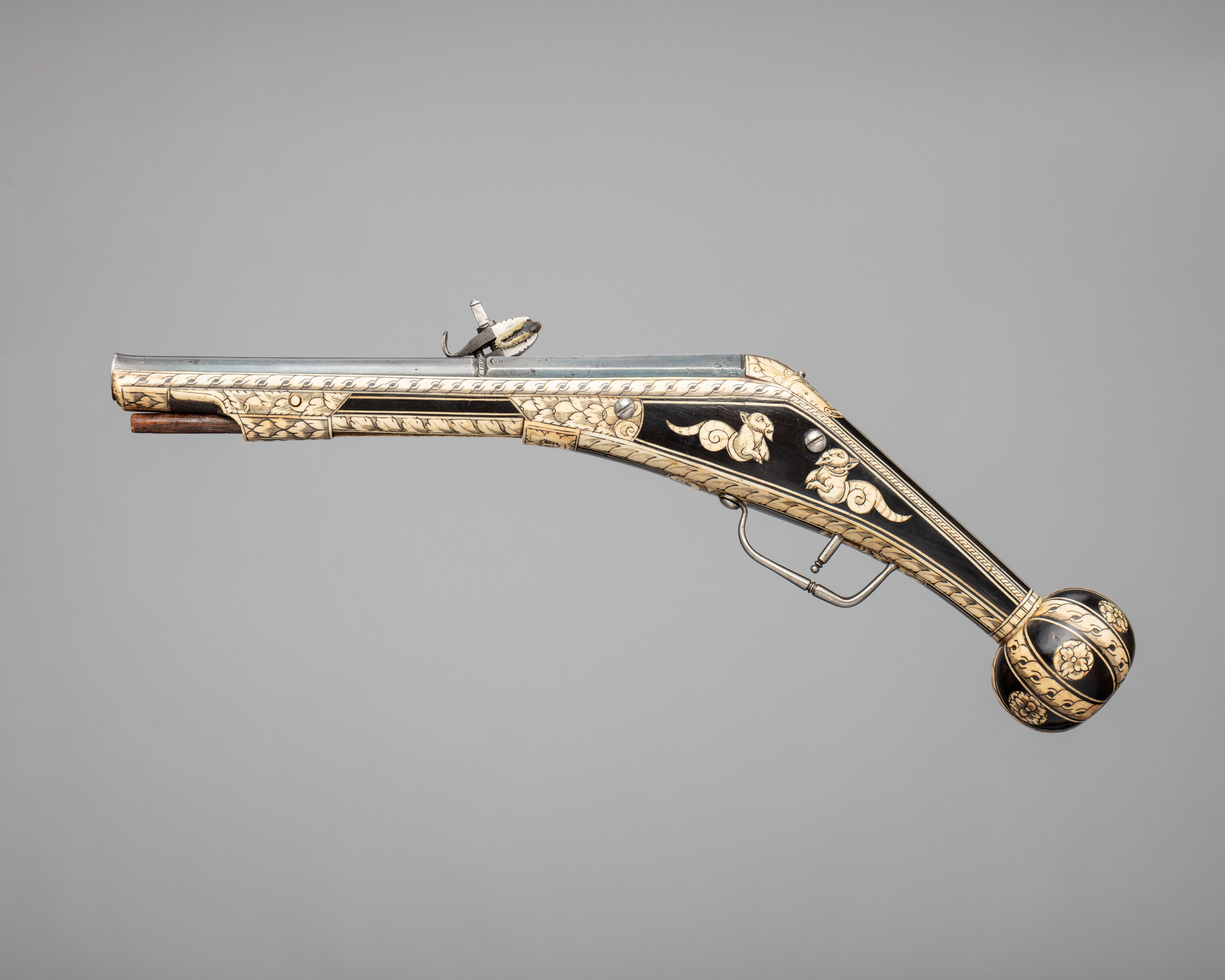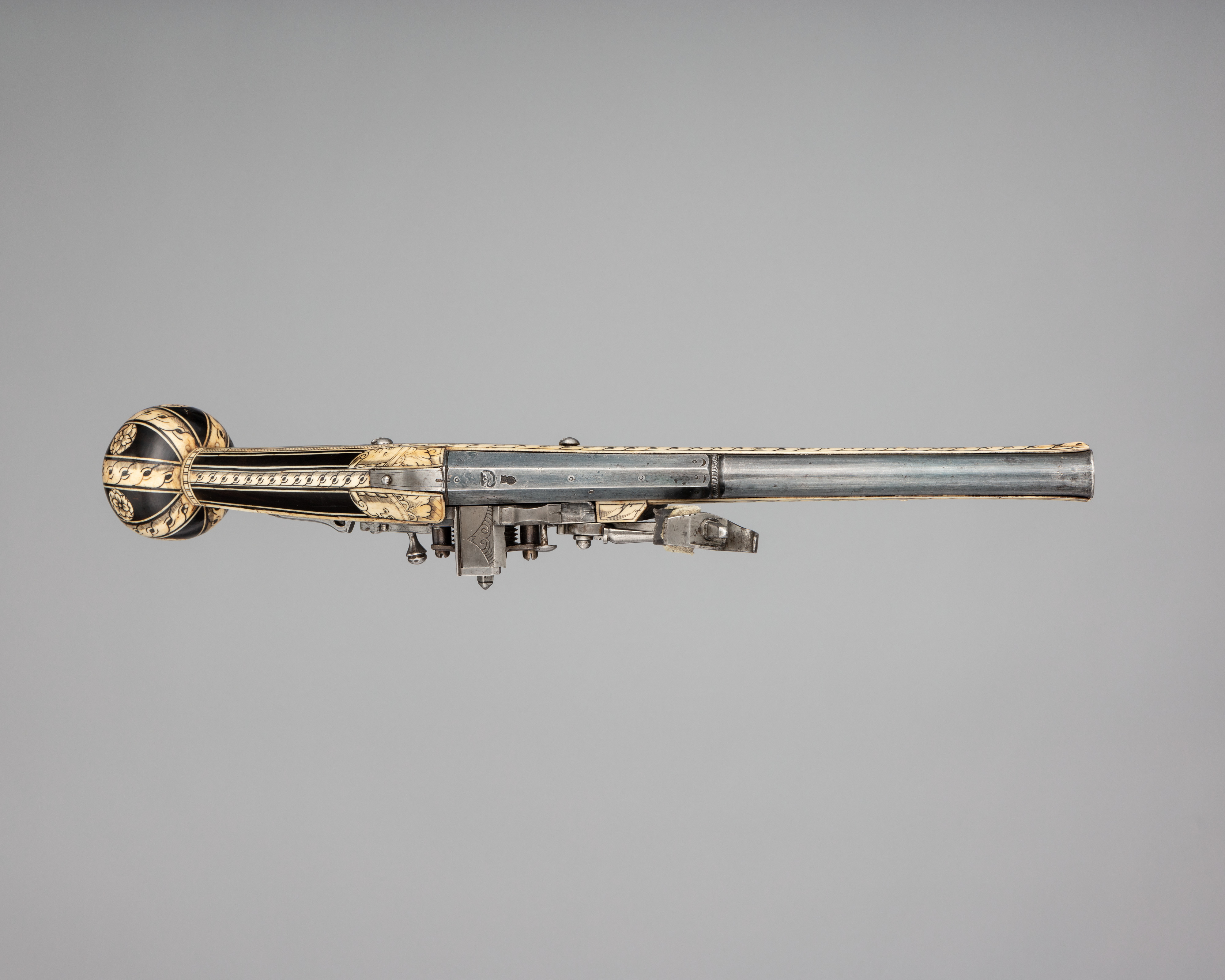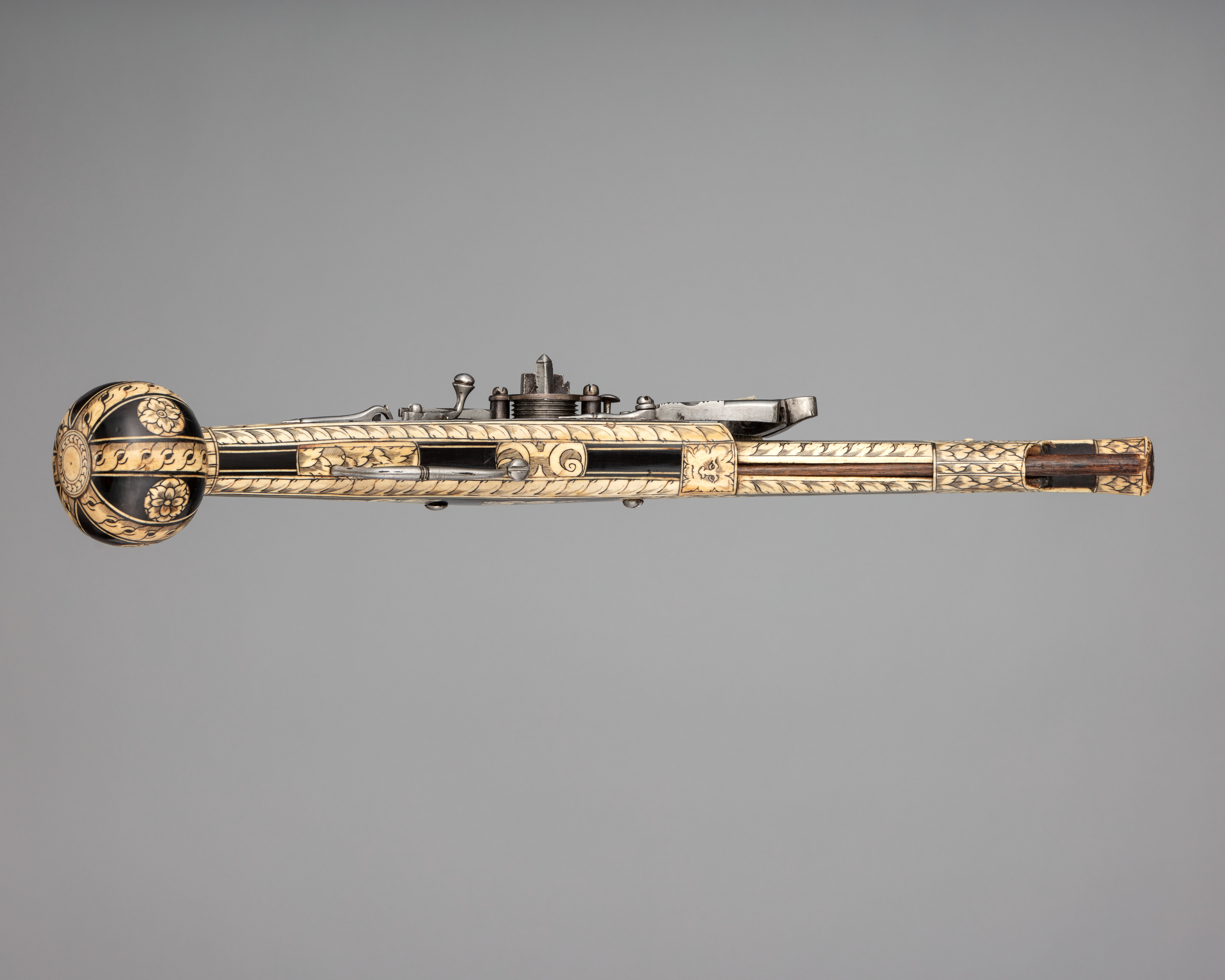Wheellock Pistol
Not on view
The blued barrel is in two stages, round at the front with a flaring muzzle, octagonal at the breech, and it is ornamented with chiseled roping, stamped crescents, and circles. It bears two marks; a hunting horn in a shield, the gunmaker's mark (similary to Støckel 5223), and a pine cone, the control mark of the city of Augsburg. The wheellock has a spring-closed pan cover with release button, and safety catch. The cock is chiseled with a stylized dragon.
The ebonized stock is inlaid with staghorn engraved with stylized foliage and geometric patterns, and with a lion's mask on the forestock, two crowned female heads on the grip, and two grotesque dragons with devil's faces on the left side. The incisions were blackened to make the design stand out.
After the automatic-ignition mechanism––the wheellock––was devised around 1500, it was first applied to firearms used on horseback. In fact the appearance of pistols––weapons handled with one hand––was due to the invention of the wheellock, and by the middle of the sixteenth century they became part of the equipment of middle and light cavalry, not just weapons available exclusively to men of high rank as had initially been the case. Since an ordinary pistol could deliver only one shot and had to be reloaded to fire the next round, pistols were commonly made in pairs and carried in leather holsters, one on each side of the saddle. A large ball-shaped pommel on the pistol grip made it easier to retrieve from the holster and also helped to conterbalance a heavy barrel.
The city of Augsburg was one of the foremost arms-producing centers in Europe, and its armorers were among the first to produce wheellock pistols and carbines. Since wheellock firearms were fairly expensive, even pistols of military type, as represented by this example, rarely left the gunmaker's shop undecorated. The preferred decorative technique of German stockmakers from the sixteenth century on was the inlay of engraved staghorn plaques into the wood. Apart from the simple decorative effects of contrasting materials, use of staghorn inlays also reinforced the wooden stock, which was particularly vulnerable to the rough use of military firearms.
Due to rights restrictions, this image cannot be enlarged, viewed at full screen, or downloaded.
This artwork is meant to be viewed from right to left. Scroll left to view more.






